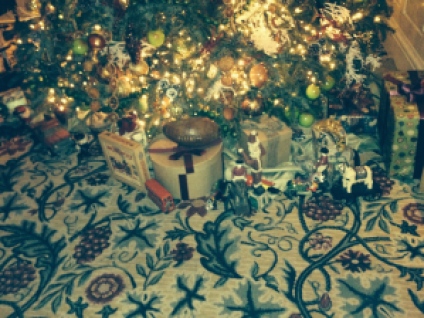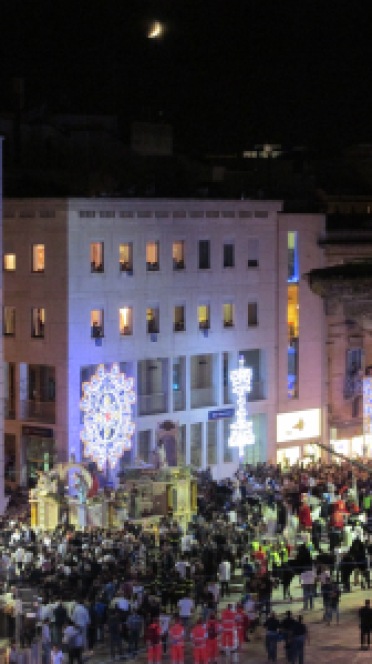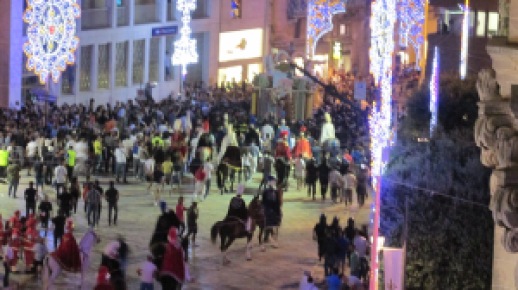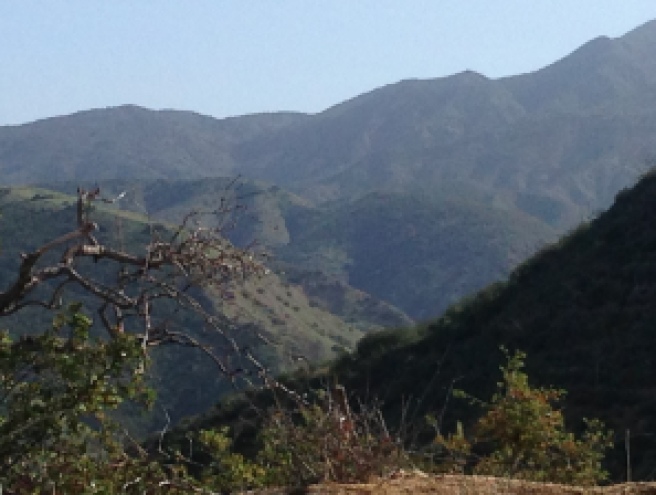
A friend wrote and asked if I was going to maintain silence from noon to three on Good Friday.
“Sort of,” I responded.
At the peak of the three hours I would be on a plane from the OC to San Francisco, reflecting on the twists and turns of life as I frequently do on short flights. As it turned out my participation in the rituals of the three-day tridium preceding Easter gone down the tube of ancient history barely crossed my mind on the flight itself.
Nor were signs of such as evident when I arrived at the city by the bay. The presence of the bunny, decorated eggs, chocolates, pastries and colorful bonnets illustrated the mind of the general public on the hallowed holiday. While a well-filled Easter basket failed to show up at my hotel door, I was not bereft. In fact, during the two days in SF my transcendental basket ranneth over with grace lingering from the love ritual celebrated on Maundy Thursday.
Originally, we decided to go to the “city,” because the Harbor View, a Klimpton Hotel, offered a special. The special was so good it made the two nights special, but I am hesitant to return to the HV. Clean, well-appointed, friendly staff were all in place, and a beautiful view of the Bay Bridge, but when I wanted cozy chairs that provide a place where I could put up my feet and get on my computer; there were none to be found. With coffee available only in the lobby, my poor partner had to make a run first thing out of bed! To make matters worse no croissants, cronuts or juice were available. Cellophane wrapped, overly sweet Danish would have served.

On this Holy Sunday we chose to create a silvery side to the lining. Rather than ordering breakfast up from a local eatery we decided to do a bakery crawl. This was a new one for me; with my kapha body (a Sanskrit word for one of the three Vedic body types) I generally do not indulge in flour carbs.
We exited the hotel to a gorgeous day. At the end of a hilly street sidelined by skyscrapers, we witnessed peeks of sparkling azure water canopied by columnar slices of glistening bridges. The Sun had risen and the beauty it showered was enough to resurrect a tingling joy through out my body.
I carried a list of bakeries I procured from Eater.com. Twentieth Century Café, our first stop, slightly obscured behind non-descript windows and a bit down the street from the heart of Hayes Valley, was every bit twentieth century. The wait people mainly women decked in clothes of the forties and makeup finished off with bright orange and red lipsticks greeted us with large smiles. An assortment of goods, Meyer lemon buchty, cherry rhubarb strudel and sacher torte tempted us from the glass box counter, but we opted for the pink, marshmallow bunnies. Not as a breakfast food, but as a dessert we would take to the dinner to which we had been invited later in the day.
We saved our appetites for the next stop: Sweetmue a new bakery, with Mue (pronounced mew) herself as our hostess. The goods on Mue straight from her website describe how Sweetmue evolved.
“after 10+ years in finance in sf, nyc and then houston, muller decided it was time to move back to the bay area and spend a year doing anything except excel spreadsheets and powerpoint presentations. After a few weeks of winter in Europe, it didn’t take much for her sister to convince Mueller to head back to nyc in the spring and attend the pastry course she always wanted, but never had time to. within the first two classes it was pretty clear that finance was going to be a thing of the past. So after a few months of internship in the east bay and a month-long trip all over asia, the idea for sweetmue was born.
Excel spreadsheets remain a big part of muller’s life. but they are now used for planning and recipe for her little baker in an awesome sf neighbor where muller can share her lifelong love affair for anything sweet!”
Sweetmue was meant to be a ten minute stop, we had miles and a whole list of bakers to visit before we slept, but with the sweetness of Mue in addition to that of her pastries, we dawdled for two hours tasting, conversing (Mue shared a few baking secrets), and when other customers crossed the threshold, engaging.

Finally, happily satisfied and with bags of black sesame and green tea macaroons for more dinner dessert, we left for the next stop.
www.sweetmue.com
Mue had recommended b Patesserie. Who was I to argue with one of the new pastry marvels of SF? She warned us that the line at b would be down the street and around the corner. It was not, probably because we arrived about 2 on Easter Sunday.
“Two things you must have,” she advised. “The chocolate chip cookie and the Kouign Amann.”
The latter is a combination croissant and brioche for which b has become famous. We had two of those, a rather late lunch we rationalized, then purchased a bag of peanut butter macaroons and chocolate chip cookies to also take to dinner. The cc cookies were great, but how many chocolate chips can you eat in a lifetime? The peanut butters would be a hit at the dinner party, but Mue’s black sesame subtle as they were would provide the ectasy needed to complete such a blessed day.
Biondivino (don’t you love that name?) is one of the finest, mainly Italian wine shops I have come across, at least in this lifetime. Ceri Smith owner, and also Wine Director for Tosca Cafe was recently named SF Sommelier of the Year by Food and Wine Magazine.

biondivino
www.biondivino.com/
When Ceri and I met to describe the connection we felt she exclaimed, “we were separated at birth.” I was duly complemented as I had arrived at least acouple decades before she. Ceri had invited us to Easter dinner in the shop. She told us she would do most of the cooking with a little potluck to finish it off. I think of Ceri as an Italian wine specialist par excellence, but after experiencing her cooking, I know that she holds in own in this arena as well!
At day’s end, a long one, I counted my proverbial blessings: morning meditation at the bay, beautiful city, sunny weather, divine sweets from some of the finest pastry chefs in the country, an intimate dinner with great minds, rare wines and food, my basket overfloweth!
































































